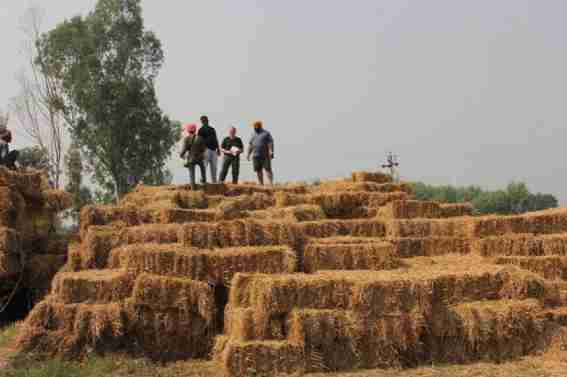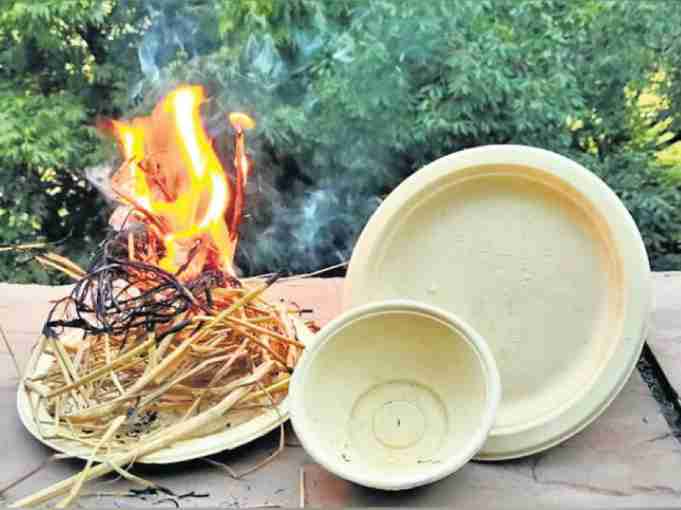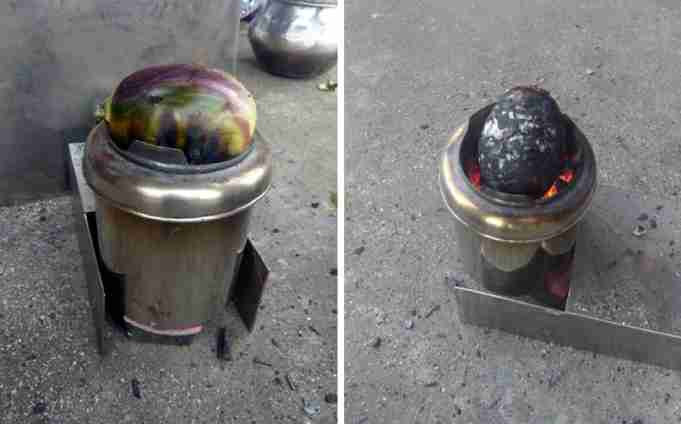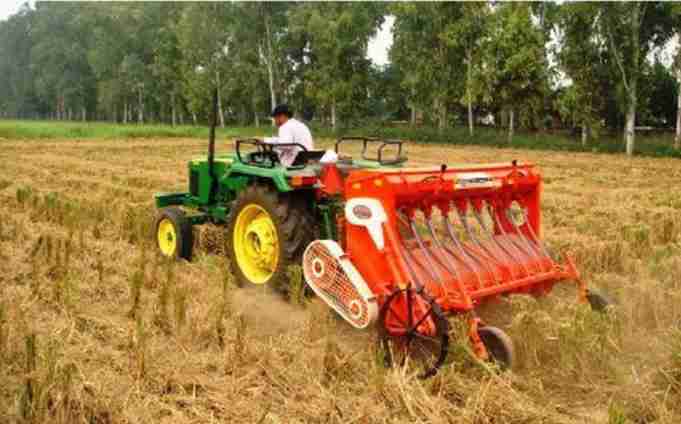Each year in the winters, immense swathes of North India, especially the Delhi-NCR locale, get immersed under a haze of noxious brown haze. Other than the typical suspects, one particular marvel which has a gigantic bearing on the staggering air quality in the Delhi-NCR district is the choice of farmers, particularly in Punjab and Haryana, to consume their fields following the rice cultivation
As indicated by an August 2019 investigation titled ‘Fields on fire: Alternatives to crop residue burning in India,’ which was written in the journal named SCIENCE, farmers in northwestern India consume around 23 million tons of rice straw with the goal that they can clear the land rapidly for planting wheat.
The impacts are destructive. Air quality checking stations in Delhi-NCR enlisted over 999 reporting in real-time quality Index, which is past crisis levels. Schools and workplaces were constrained and compelled to close down for a considerable length of time.
According to a report in Business Standard, authorities at the Central Pollution Control Board a year ago expressed that stubble-consuming in Punjab and Haryana added to 20-30% of the capital’s general air-contamination for that period.
Harvest consumption just worsens the air quality emergency for 15 days to a month, we likewise critically need complete arrangements.
Here are some of them:
1. Bio coal with crop residue

Two farmers from Punjab’s Samrala town, Sukhbir Dhaliwal, and Kamaljeet Singh, who have been cultivating for more than 30 years, have started with an enterprise which makes bio coal with stubble.
This helps in keeping the surroundings clean, along with adding to the farmer’s income.
Two tonnes of the bio-coal pattern was sent to Europe to be used in a thermal plant. Farm2Energy, the company working in this field is located miles within the Mank village in Samrala.
It was established and started its operations in 2016. Today, the organisation is using paddy crop, sugarcane and corn stubble residue, and looking to bid for the National Thermal Power Corporation (NTPC).
2. Convert Agro Waste Into Cooking Fuel
Bhubaneshwar-based Debashree Padhi is the brain behind addressing two of India’s largest air pollutants causes, biomass fuels and stubble burning.
The 23-year-old has designed ‘Agnis’ cooking stoves that produce no
particulate be counted and emits less than 0.15 ppm carbon monoxide. Another
benefit of Agnis is that the users no longer need to dwell in the forest for
firewood.
The benefit of this?
This cooking technology reduces the cooking time by 1/2 compared to everyday stoves.
3. Waste Decomposer
Researchers at the National Center for Organic
Farming have built up a ‘Waste Decomposer’ arrangement prepared with powerful
microorganisms that drive in-situ treatment the soil after the harvesting of
crop and remaining stubble.
This is generally done by spraying of the preparation on the post-harvest stalks of yield plants and leaving it for a month. The waste decomposer arrives in a little jug that is dispersed to farmers at a measly cost of ₹20. The solution can break down more than 10,000 metric tonnes of biowaste in 30 days. The equivalent can likewise be utilized in foliar splash and by means of the dribble water system.

4. Straw to Make Fuel, Eco-Products
Did you realize that India produces more than 550 million tonnes of crop residue each year and that the best producers of this crop residue are Uttar Pradesh, Punjab, and Haryana?
Ever wondered what happens to most of this agricultural waste?
Meet Sukhmeet Singh, the person who is fixing the kingdom’s paddy straw burning trouble together with his countrywide award-winning startup, A2P (Agri2Power) Energy Solution.

Established in March 2018, A2P Energy Solution is working with farmers by way of buying off this crop residue from them and converting this waste to beneficial merchandise.
After substantial studies on the issue, Singh and his group started operating on the goods that could be developed using paddy straw.
They processed this straw to expand pellets or bio-gas that might be an alternative to coal and timber. The first stage of creating the pellets is actually commercialised, and that they’ve supplied pellets to clients in food processing, pharmaceutical and dyeing industries such as Pepsi and Hindustan Unilever.
They use superior machine learning to optimise their operations and tune farm fires.
Since the accrued straw needs to be transported to their production plant inside 20 days to be effectively transformed to biomass fuel, A2P Energy Solution efficaciously makes use of Google map API to extract the photographs of paddy fields which may be close to the harvesting season. This permits them to reach out to those farmers, buy that straw and save you burning.
Similarly, further, they use NASA satellite television for pc data to music open field paddy straw burning. This allows them unmarried-out crop burning regions and educates farmers for paddy straw instead of burning them.
5. Converting Crop Stubble Into Animal Feed, Manure, Cardboard
In one of his most recent tweets, famous rural researcher MS Swaminathan stated, “In South India, stubble isn’t singed as there’s a financial incentive as creature feed. For a considerable length of time, I called attention to numerous business employments of rice straw. We ought to receive a do-nature approach with farmers to change over rice stubble into salary instead of making them operators of eco-catastrophe.”
View video where he talks about the same here – https://www.thehindu.com/news/national/watch-stubble-burning-ms-swaminathans-solution/article29886244.ece
You can likewise upcycle stubble to make items including paper, cardboard and creature feed. In Palla town outside Delhi, for instance, a non-benefit called the Nandi Foundation as of late shared a tweet of its drive where 800 MT of paddy buildup was bought from farmers to transform it into excrement.
6. Happy Seeder
Rather than consuming the stubble, a
tractor-mounted machine called the ‘Happy Seeder’ cuts and lifts rice straw,
plants wheat into the exposed soil, and stores the straw over the planted
region as mulch.
As indicated by an ongoing report distributed in the journal Science, it will “take out air contamination by crop consuming and lessen ozone-depleting substance emanations (GHG) from on-ranch exercises by over 78% comparative with every consuming alternative.”
Having said that, there are concerns encompassing the machine’s expenses.
7. Converting Crop Stubble to Biodegradable Cutlery

Kriya Labs, an IIT-Delhi startup, has built up a machine that can change over the remaining rice straw into mash, and that is additionally formed to create biodegradable cutlery.
“The straw is treated with a characteristic dissolvable to isolate the natural polymer from cellulose prompting the development of mash. The semi-strong substance is then dried and shaped into biodegradable cups, plates and containers. This whole activity is eco-accommodating and maintainable,” says Kanika Prajapat, the Chief Technology Officer.
Kriya guarantees that in a day they can produce 4-5 tons of rice mash with buildup created by 800 sections of land each reap season.
8. Bio-Bricks Instead of Burning

In India, the thermal power plants emit 22% of the full annual CO2 emissions. And then there’s agricultural waste—the USA produces greater than 500 million heaps of it each year. While some of the waste is used as fodder, approximately 141 million lots are burnt every 12 months.
Fortunately, architects Priyabrata Rautray, who’s also a PhD scholar in IIT Hyderabad’s Design Department, and Avik Roy, an Assistant Professor at the KIIT School of Architecture, Bhubaneshwar, have given us a unique answer.
They have developed bio-bricks for production from agricultural waste merchandise. This innovation addresses each waste management and improvement of green, sustainable constructing substances.
The method of creating bio-bricks starts off with a careful choice of the dry agro-waste like paddy straws, wheat straws, sugarcane bagasse and cotton plant. The team determined to use dry sugarcane bagasse for the primary sample. The bagasse is first chopped to the preferred size. A lime-primarily based slurry is ready, and the chopped agro-waste is brought to the slurry and combined thoroughly by way of hand or mechanical mixer, to create a homogenous combination. This aggregate is poured into moulds and rammed with a timber block to make a compact brick. These moulds are left to dry for an afternoon or two, and then their sides are eliminated, and the brick is allowed to dry for fifteen to twenty days. It takes about a month for these bio-bricks to obtain its working energy by way of air drying.
Bio-bricks are not only more sustainable than clay bricks, but they are also carbon sinks as they help in restoration of carbon dioxide.
Admittedly, these bio-bricks aren’t as robust as their clay counterparts and are nonviable for systems that might bring massive amounts of load.
Nonetheless, the researchers agree with that they are perfect for low-price housing alongside a structural framework comprising of both steel or timber.
9. Incentivising Farmers to Grow Crops that don’t guzzle water
The issue of stubble burning can’t lay totally on farmers. For instance, in Punjab, this training has a ton to do with the groundwater emergency, and this is a well-recorded actuality.
Since paddy is a water-escalated crop, why not boost farmers to make the move towards millets? Other than utilizing almost no water, millets are reasonable for the land accessible in Punjab and are profoundly nutritious.
In any case, how would you boost farmers to profit like paddy?
“Delhi can counteract its yearly wellbeing fiasco by making markets for these nutritious millets. Imagine a scenario where Punjab and Haryana remembered millets for their noontime suppers in schools. Aside from positive wellbeing results for youngsters, this could likewise be a fix for a prior, dirtying strategy blemish. Delhi could offer to work with Punjab to distinguish how a lot of millet supply it can secure and devour one year from now, and pilot a downstream undertaking in select schools. The exercises ought to be joined to scale up and feed kids with millets all the more regularly,” said Bharati Chaturvedi to Hindustan Times.
Between chose agents quibbling among themselves in Delhi, Punjab and Haryana, and the Supreme Court’s messages to normal ranchers, the talk encompassing yield consuming is overflowing with sadness.
In any case, there are genuine arrangements that can work, and it’s about time that they are used.
Recommended Story – Is there a Solution to Delhi’s Air Pollution? List of Startups working to solve the problem












